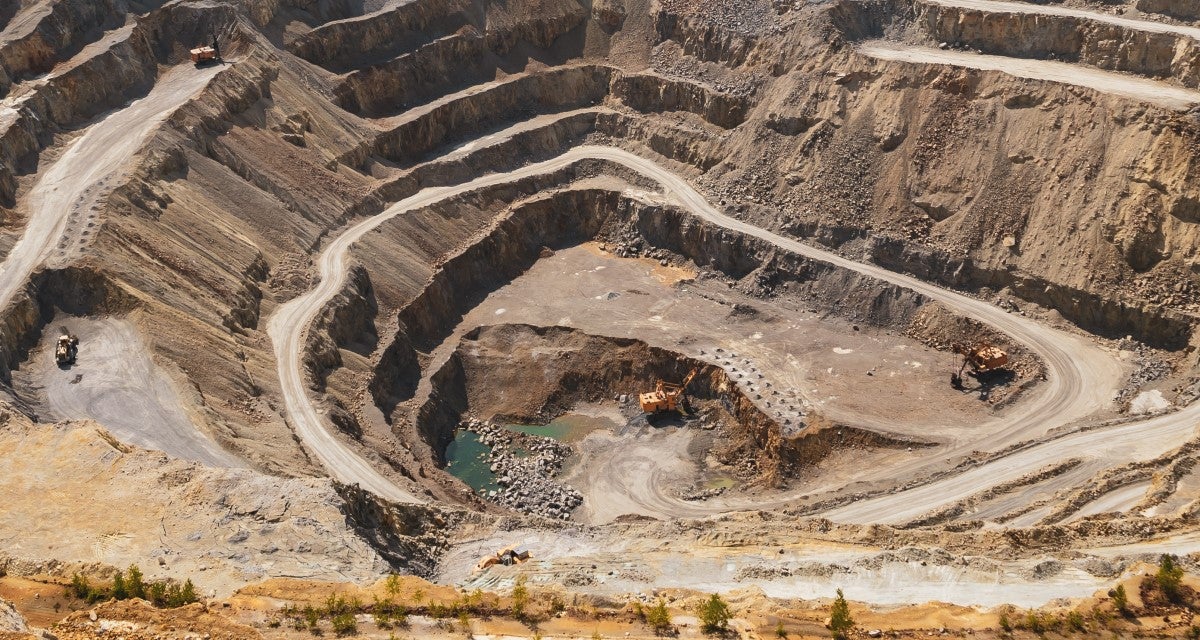
Until recently, research on nitrate leaching in mining has largely revolved around the discussion of its presence and its impact. 40 years since the first major study on the extent of nitrate leaching from blasting agents and its effects on mine water quality, there is little readily available information about the sources of nitrogen as they relate to blasting practices.
Consequently, the approach to controlling nitrate leaching has been ensnared in a ‘replace ANFO (ammonium nitrate/fuel oil) for water-resistant emulsions’ paradigm. While this is very much a legitimate a solution, it is certainly not the only one. And in times of soaring explosives costs, it is also not the most economical option. Given the range of activities involved in blasting, a closer look at certain practices is likely to reveal where mitigation efforts will offer the best return.
Explosives loss occurs at every mine. Going as far back as the early 1990s, reports described this loss of explosives to the environment as amounting to between 5-15% of total explosives entering a mine. More than 27 years later this figure remains relatively unchanged, as seen in a 2018 study of an underground mine in Northern Manitoba, Canada (Sidenko, Nikolay V. 2018). In this instance, nitrate loss averaged above 16.8% of all bulk explosives loaded in blastholes. That’s 39.7 kg of N/day or 1.19 tonnes of nitrate loss a month using a water-resistant emulsion.
Of the many operational activities by which ammonium nitrate in explosives can be dissolved by water the following are the most significant contact opportunities.
Spillage in storage, transit, and delivery
When bulk explosives arrive on site, they are often in a non-sensitised form that requires some processing to sensitise the material. This involves moving it from storage to mobile processing units (MPUs). MPUs or bulk trucks then deliver the product to the blasthole. At each stage of the transfer process, spills, poor delivery, or accidental flushing, can occur leading to product on the ground.
Incomplete detonation
When a blast fails to fully detonate, as a result of explosive degradation from prolonged sleep times or poor loading as a result of a difficult environment (as in an underground environment), the waste explosives are generally removed with the blasted material and disposed of with mineral or waste rock. This creates the potential of leaching from processing or waste dumps to effluent mine water.
Poor hole conditions
Explosives are most exposed while in the hole. While fractures and cracks offer the most obvious reasons for loss of material, the presence of moisture in wet toes, damp walls or dynamic water substantially affects the amount of leaching that occurs. Managing explosives contact at this stage is arguably the most important measure that can be taken.
While operational discipline can have an impact on mitigating nitrate loss (in particular spillages), the major sources of nitrate loss (poor blast design and hole conditions) require a different form of intervention. Traditionally, this has been to use less soluble explosives, however, with rising costs of explosives and improvements in liner material properties, mechanical barriers such as the BLASTSHIELD hole liner offer a perfect solution to this challenge.
By providing an impenetrable layer between the bulk explosives and the hole walls, explosives are protected from moisture and loss to cracks or fractures, eliminating nitrate leaching entirely.
Engineered for easy deployment with proven applications in both underground and open pit, BLASTSHIELD is a new generation of hole liner and a key solution to mitigating nitrate loss within blasting practices.
References Sidenko, Nikolay V. – Nitrogen Leaching From Explosives Into Mine Water Of An Underground Mine – https://www.imwa.info/docs/imwa_2018/IMWA2018_Sidenko_729.pdf


